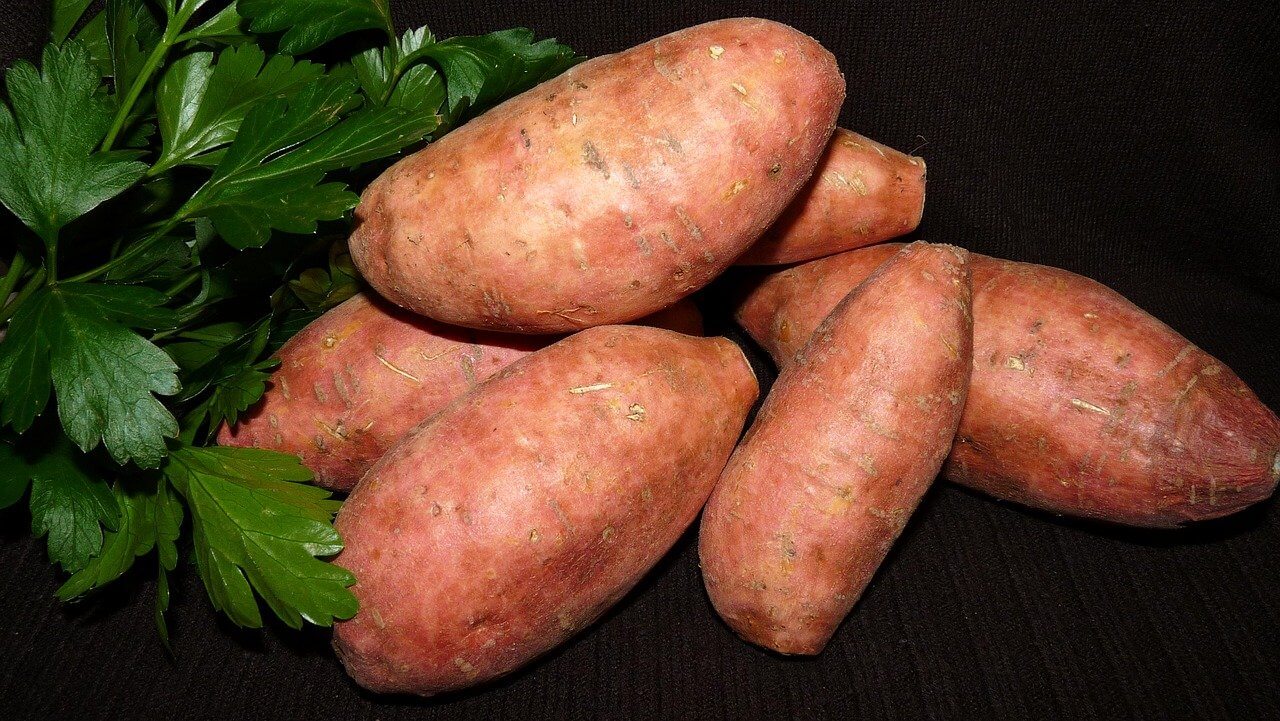Although the skin of the vegetable is where most of the best nutrients are stored, in many cases a vegetable must be peeled before it is eaten. The best way to do this, of course, is with a vegetable peeler – but what do you do if you don’t have one in the drawer?
Vegetable peelers are great in that they remove the skin whilst leaving as much of the useful flesh as possible. You can however, with a little practice, get equally good results with your sweet potatoes even without using a peeler.
How to peel sweet potatoes without a peeler? It must be possible, right? Let’s look into the different ways!
What You'll Learn Today
Peeling Yams Without A Peeler

1. Peeling with a knife
- Make sure you have a sharp knife, as a blunt one will just tear and hack at the potato.
- Take the potato in your non dominant hand.
- With the knife in your dominant hand, peel away from you, removing the skin in long movements.
- Try to peel off just the skin, leaving most of the flesh intact.
2. Peeling with hot water
- Using a sharp knife, cut a shallow horizontal line around the middle of each potato without cutting too deep.
- Place the potatoes into a pan of boiling water and cook as you would cook a sweet potato.
- Once they’re soft enough for a fork to slide into the flesh, drain them and transfer them to a bowl of ice cold water.
- Rub the surface of the potato, and the skins should fall off easily.
Here’s a video for this one so you can get the idea:
3. Baking to remove skin
- Poke holes in the sweet potatoes with a fork.
- Bake them in a pre heated oven, at 425 degrees until they’re very tender (this should take about 45 minutes).
- Remove from the oven and allow to cool enough to handle.
- Peel the skin off the potatoes. It will just slip right off!
Health Benefits Of Sweet Potatoes
Sweet potatoes are very high in fibre, complex carbohydrates, and beta-carotene, a source of Vitamin A. They are also good sources of other minerals such as Potassium and Manganese.
While a lot of these good things are readily available in the flesh of the potato, you will lose a lot of the good stuff if you always remove the skin!
When cooked correctly, even the skin of this wonderful versatile vegetable can be delicious, so make sure you have a go at using the skin too – just scrub it well before you use it, to remove any residual mud, parasites or pesticides.
What Is Good About The Sweet Potato’s Skin?
As with ordinary potatoes, the majority of the nutrients to be found in a sweet potato are stored in the skin. There is a great deal you can do with the skin of your sweet potato – you don’t automatically have to peel it off and throw it away!
- Bake the peels with a little oil and salt until they are crispy, then nibble on them like crisps.
- Leave the skins on and eat as you would a baked potato.
- Don’t peel the sweet potato for fries, as the peel adds a little extra crunch as well as those other nutrients.
Final Words
If your peeler has lost itself down the back of the cooker, or if you’ve just moved house and can’t find your peeler, or you are cooking in a strange kitchen that doesn’t actually have a peeler, don’t fret.
You don’t have to resort to traditional methods, or give up your dinner plans and get a takeaway – there are many different ways you can peel a sweet potato without a peeler.
Or go natural, forget the peeling altogether, and then you can enjoy the health benefits of the whole tuber! Just make sure they haven’t turned brown and you’ll be alright.
When I was still in the army, a Swiss knife is all that I need to peel potatoes.